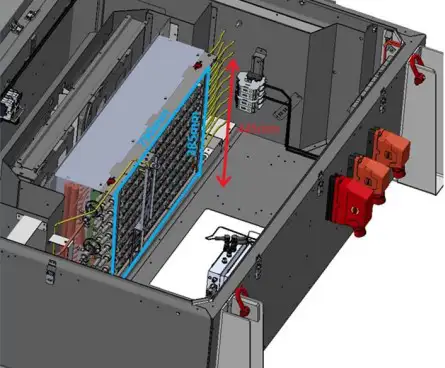By Giulia Santi, chief executive officer, Light Progress Group S.R.L.
This article is based on the experience of Light Progress, a company that designs and manufactures UV systems. The author, Giulia Santi, presented some projects that the company has done for the transport industry during the Dubai IUV-A World Congress held in September 2023.
The inaugural project undertaken by Light Progress involved collaborating with the New Delhi and Jaipur metro systems in India. Initially, the team explored the integration of UV-C devices into the metro HVAC system. However, practical challenges led to a pivot, resulting in the installation of air disinfection devices within the station’s HVAC infrastructure. This marked the company’s maiden foray into UV systems for trains, buses, trams and metros. Subsequently, the company developed specialized products tailored to this industry, secured essential certifications for the railway sector and conducted rigorous microbial testing in real-world environments.
Public transportation systems present distinctive hurdles when implementing UV disinfection protocols. While this article refrains from offering specific solutions or recommendations, it aims to share the author’s experience and insights in this domain through three recent transportation industry projects.
Technical Disclaimer: All the products and solutions described herein adhere to Italian and harmonized European regulatory guidelines concerning fire safety, vibration resistance and electrical hazards. Figure 1 outlines the general minimum requirements, encompassing aspects such as extreme temperature resistance, low fire hazard materials, shock and vibration resilience, and electrical stability.

The Complex Landscape of Public Transport
In an urban society, preventing pathogen transmission between commuters remains an insurmountable challenge. Transportation authorities and local governments play a pivotal role in addressing the spread of contaminants within mass transit networks. These efforts not only safeguard the health of passengers but also protect the well-being of the industry’s frontline workers. During the SARS-CoV-2 pandemic, heightened attention underscored the importance of disease control measures in public transportation. Unions and stakeholders began discussing the risks faced by workers in mass transit settings. However, key challenges exist in implementing UV disinfection for public transport.
Space Constraints, Power Supply and Maintenance Schedule
- Train cars inherently have limited space for additional equipment.
- A UV unit must be compact and lightweight, fitting seamlessly into the available space without compromising the car’s structural integrity.
- Continuous power supply is essential for effective UV operation.
- Regular cleaning and replacement cycles are necessary to maintain optimal performance, ideally coinciding with scheduled train downtime.
Navigating Stringent Regulations and Standards
- The rail industry operates under rigorous safety and interoperability regulations.
- Suppliers face a multitude of region-specific standards and regulations, often acting as barriers for new entrants or those from different industries.
- Complex and restrictive guidelines are set by national, regional and local authorities.
Balancing Public Service and Budget Constraints
- Railway operators operate within tight budgets, especially in public transport systems.
- Suppliers must offer cost-effective solutions that align with tender requirements.
- Budget constraints demand careful cost control. When collaborating with rail manufacturers, committing to a 10-year fixed-price supply of products, spares and replacements becomes essential.
Navigating Complex Supply Chains
- Rail equipment and components rely on intricate supply networks.
- Effective supplier management ensures consistent quality and timely delivery while mitigating potential disruptions.
- To be listed as a supplier, meeting transportation industry-specific certifications, standards and compliance requirements is imperative.
Project 1: Air Disinfection in Train/Tram/Subway Coaches
Amidst the global COVID-19 pandemic, the author’s company received an opportunity from an HVAC manufacturer. The challenge? Retrofitting UV devices into train coaches operating in Milan, Italy – a city that witnessed a significant outbreak following China’s initial wave of infections.
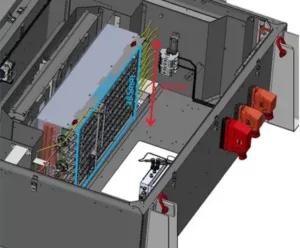
Project Tasks:
- Incorporating UV into Existing HVAC Systems (Figure 2): The team seamlessly integrated UV technology within the train’s HVAC infrastructure. The goal: Enhance air quality and reduce pathogen transmission.
- Treating HVAC Surfaces and Airflow: Both surface disinfection and air purification were addressed. The solution needed to be effective, low maintenance and adaptable to heating and cooling requirements.
Key Inputs:
- Software Calculations: Rigorous calculations determined the optimal UV dosage for efficient air treatment.
- Innovative Design: Creative engineering allowed us to incorporate glass components into the train design.
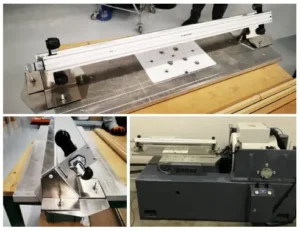
The Solution (Figure 3):
- Efficiency: The installed UV system significantly reduces viruses and bacteria.
- Low Maintenance: Minimal upkeep required.
- Versatility: Suitable for both heating and cooling systems.
- Compact and Lightweight: Easy retrofitting into existing train infrastructure.
Project 2: Surface Disinfection in Train/Tram/Subway Cabins
During the pandemic, Trenitalia – the Italian public company responsible for national long-distance transportation – faced a pressing issue. Frequent sick leave requests and worker discomfort during shift management prompted the need for a solution. The existing protocol relied heavily on chemical-intensive deep surface cleaning. The national rail union urged Trenitalia to explore a more efficient approach. Rather than limiting disinfection to the trip’s start and end, the union sought a method to swiftly disinfect train cabs during stops and shift changes. Additionally, the use of chemicals had adverse effects on surfaces, particularly plastic buttons and instruments.
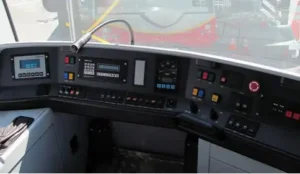
Project Tasks:
- Consistent Treatment of High-Touch Surfaces in the Driver’s Cabin (Figure 4): The objective was to ensure thorough disinfection across frequently touched areas.
- Transition from Manual Chemical Disinfection to Automatic, Residue-Free Treatment: The company aimed to replace labor-intensive manual processes with an automated solution.
- Meeting Union Requirements for Worker Safety: Adherence to safety guidelines was paramount.

Key Inputs:
- Surface Geometry Irradiation Simulation (Chart 1): Calculations guided the approach to surface disinfection.
- Disinfection Timing for Employee Safety During Fast Shift Changes: Ensuring worker safety during rapid disinfection cycles.
- Comparing UV Effects to Chemical Usage: Demonstrating that UV exposure is less damaging than constant chemical application.
The Solution:
- Efficiency: The UV system significantly reduces viruses and bacteria within minutes.
- Electrical Integration: Seamlessly integrates with door opening for automatic activation and safety shutdown.
- Recessed Mounting: Discreetly installed in the booth ceiling.
Testing Challenges:
- Demonstrating precise UV dose delivery.
- Proving that the effective microbial dose does not harm surfaces as much as chemicals.
Project 3: Water Disinfection in Train Tanks and Point of Use (POU) in Train Toilets
In this project, the author’s company tackled water disinfection within train infrastructure. The focus extended to both train tanks (Point of Entry, or PoE) and individual faucets (Point of Use, or PoU). The primary objective was to combat Legionella contamination effectively.
Project Tasks:
- Treating Both Tank and Faucet Water: The solution needed to address water quality at both entry points (tank) and user endpoints (faucets).
- Targeting Legionella: Legionella bacteria pose a significant health risk, especially in enclosed environments like trains.
- Designing an Economical Solution: The aim was to create a standard approach that wouldn’t necessitate special tenders from local authorities.
Key Inputs:
- Undrinkable Water Source: Acknowledging the initial water quality challenges.
- Contamination Reduction (Not Elimination): The goal was to achieve a specific reduction in microbial load (measured in log reduction).
- Economies of Scale: Ensuring cost-effectiveness through scalable solutions.
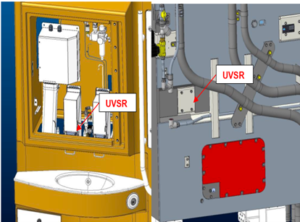
The Solution (Figure 5):
- PoU Mounted LED Unit: The compact LED unit discreetly integrates with individual faucets.
- Dedicated PCB for Control and Monitoring: A customized circuit board manages the UV unit and interfaces with the train’s monitoring system.
- Flow Rate Optimization: Achieving a minimum 2-log reduction in Legionella at a flow rate of 2 liters per minute (LPM).
Conclusions
As awareness grows regarding the role of transportation infrastructure in disease transmission, national security and public health must be redefined. By proactively controlling airborne disease spread within public areas, especially transportation hubs, overall health security is enhanced. Sustainable interventions not only reduce infrastructure vulnerability to new pathogens but also bolster responses to existing threats like TB, SARS, MERS and Legionella.
Giulia Santi is the chief executive officer for Light Progress Group S.R.L., headquartered in Italy. For more information, visit www.lightprogress.it.


